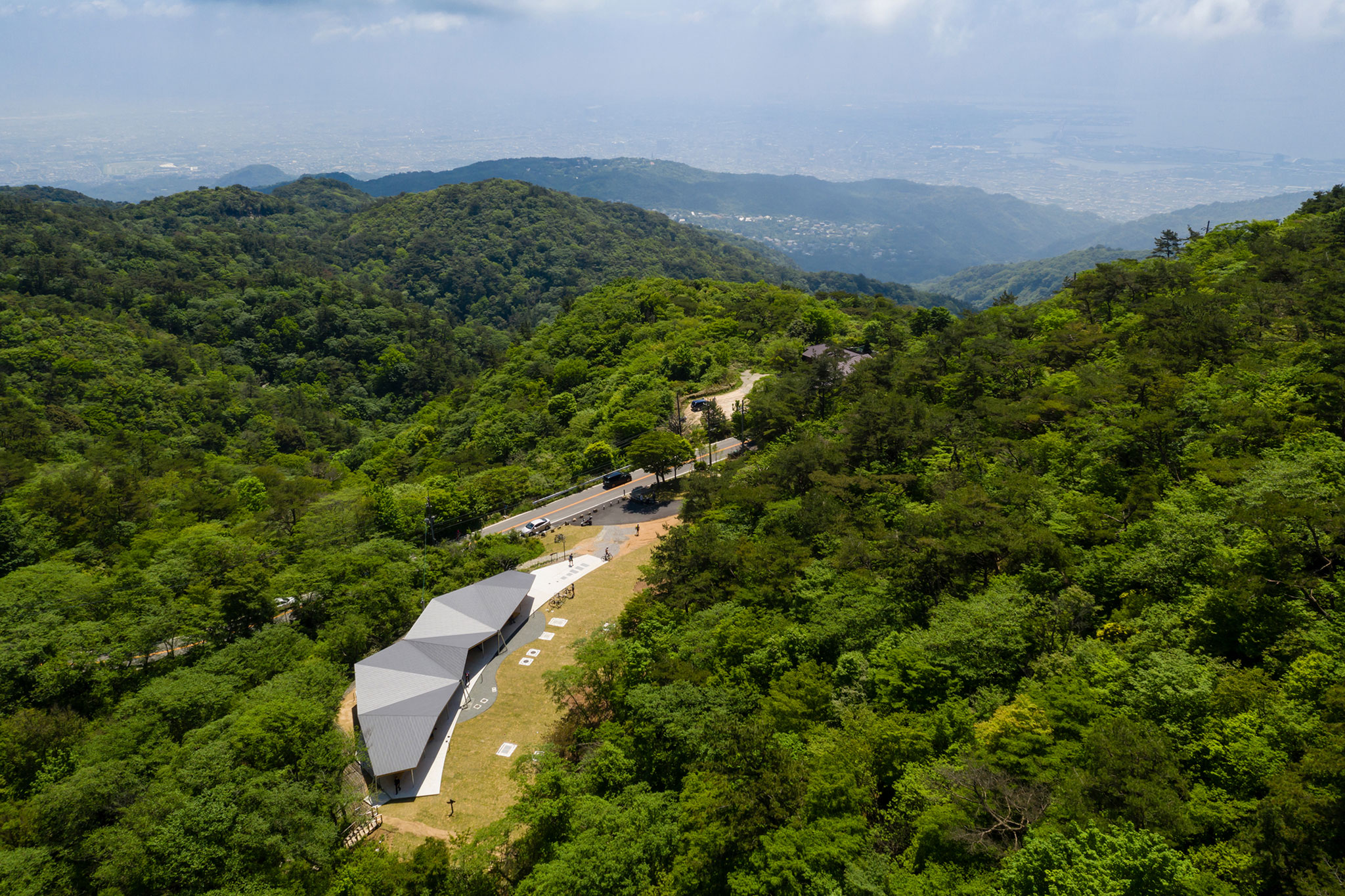The structure that gives shape to the building consists of a cross-laminated timber (CLT) system of Japanese cypress, with other areas constructed with wood thinned from Mount Rokko, felled by the city of Kobe to maintain the forest, and finished with local trees. In addition, a sewage treatment system has been buried in the area to service the toilets, as water and sewage systems were not in place, and the wash water is recycled.
 The Rest Space at the Top of Mt.Rokko by ofa. Photograph by Shigeo Oga.
The Rest Space at the Top of Mt.Rokko by ofa. Photograph by Shigeo Oga.Project description by ofa
As part of improving the value and environment of Mt. Rokko, one of the attractions of the city of Kobe, there is a plan for a public toilet/rest space and a garden newly built in the area at the top of Mt. Rokko. A thin wooden roof that folds in response to the mountains floats lightly on a bench that looks like a large piece of furniture. With the colors of trees and finishes that harmonize with the nature of the national park, it blends in with the environment of Mt. Rokko and creates a relaxing landscape.
By lowering the eaves of the deep eaves and suppressing the rain, it is easy to use even in rainy weather and protects the outer wall. For cross-laminated timber (CLT), cedar Japanese cypress, designated prefectural lumber, was used, and domestic lumber was mainly used for exterior materials and benches. Part of it is made from thinned wood from Mt. Rokko, cut down by Kobe City to maintain the forest, and finished with local trees. We planned a landscape of fields with local vegetation to experience and maintain the nature of Mt. Rokko more abundantly in the garden.
The Rest Space at the Top of Mt.Rokko by ofa. Photograph by Shigeo Oga.
A septic tank system can be used with confidence. Even if the water and sewage systems are not in place, a purification system is buried to be used as a flush toilet, and the washing water is recycled. In addition, the system was designed to collect rainwater in the roof's valley and reuse it as hand-washing water. The soil and rainwater tank are buried underground, and the upper part is a garden to secure a large space. The shed is a steel structure in which the roof of the folded plate structure by CLT is supported by steel columns. By connecting square and triangular wooden panels with a side of 4 to 12 m at different angles, a sloped roof with multiple ridges can be created. By randomly supporting them with delicate steel frames, a large space is created in a conventional wooden structure structurally separated from the shed.
Since it is located in a special area of the national park, the Kusahara to be created is composed of regional vegetation as much as possible, giving maximum consideration to the vegetation peculiar to the place. Participants were recruited as WS during the design period, and herbs were planted with seedlings raised from seeds collected in the Rokko Mountains or locally collected strains. Raising seedlings was entrusted to the Hyogo Prefectural Museum of Nature and Human Activities. All of these are local vegetation, creating a colorful field situation in the four seasons. We would like to have an opportunity for citizens to participate in future care.










































